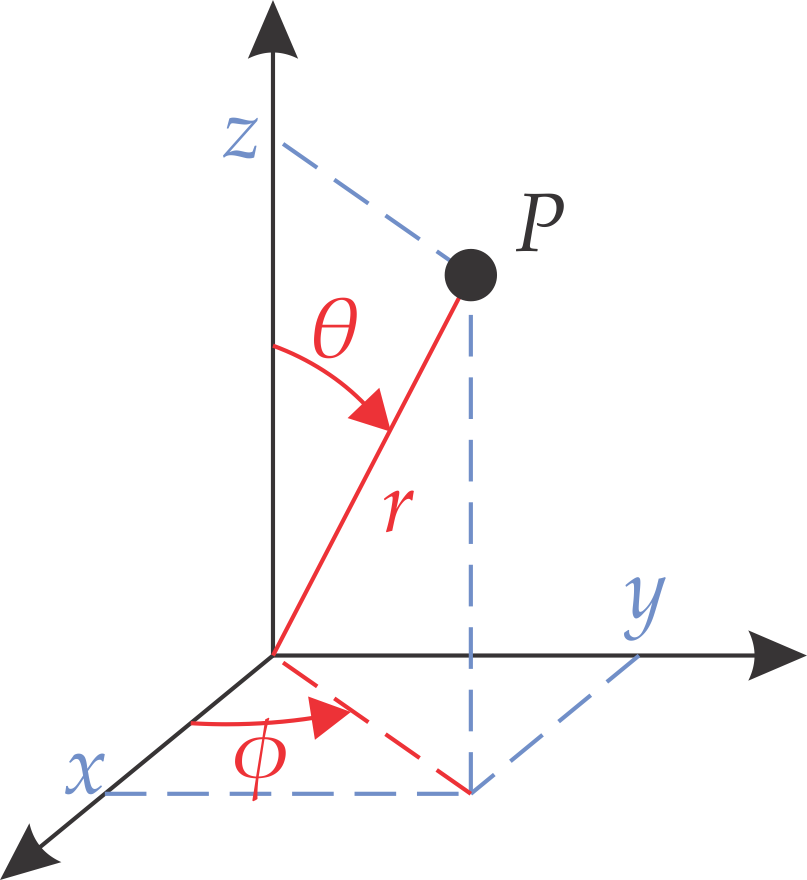3.3. Spherical coordinates
There are several possible coordinate systems that can be used to define a location in three-dimensional space. Besides the Cartesian coordinates \((x,y,z)\), one can use spherical coordinates.
Definition
In spherical coordinates, a point is specified by three coordinates:
\(r\): the radial distance, i.e. the distance of the point from the origin
\(\theta\): the polar angle, i.e. the angle down from the \(z\) axis, limited to the range 0 to \(\pi\)
\(\phi\): the azimuth, or azimuthal angle, i.e. the angle off the \(x\) axis in the \(xy\) plane, limited to the range 0 to \(2\pi\)
Figure 3.21 illustrates these coordinates and how they are related to the Cartesian coordinates

Figure 3.21 The Cartesian coordinates (blue) and the spherical coordinates (red) of a point \(P\).
This is the definition used in quantum theory and physics. Other fields (mathematics, etc.) use different definitions.
Conversions
The conversion from spherical coordinates to Cartesian coordinates is as follows
To convert from Cartesian to spherical coordinates, use
Integral
Integration of a function \(f(r,\theta,\phi)\) over all space in spherical coordinates requires
Do always include the factor \(r^2\sin\theta\).
Laplacian
The Laplacian \(\nabla^2\) in spherical coordinates is the sum of a radial operator \(R^2\) and an angular operator \(\varLambda^2\)
The radial operator has several equivalent forms
The angular operator is
The angular-momentum operators used in the description of rotating molecules and in the Hamiltonian for the hydrogen atom are proportional to \(-\varLambda^2\).